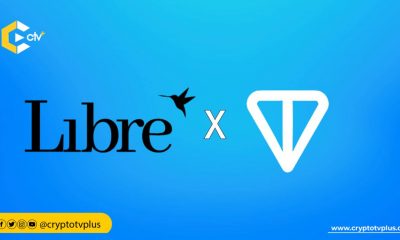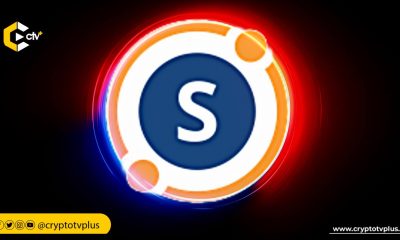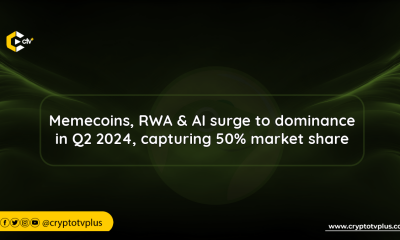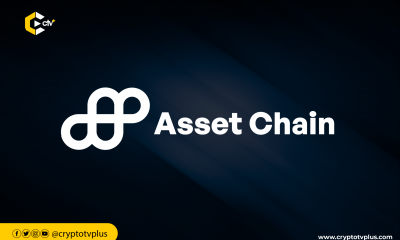Education
What is Real World Asset Tokenization?

If you have been very active in the crypto space for the past three months, and you haven’t heard about RWAs, then sorry to tell you, but you might have been living under a rock. The discussion surrounding the RWA has been truly mind-blowing.
A lot of projects have been pivoting to have a part of themselves in the RWA sector. Maybe to gain off the narrative or maybe they want to build something tangible. Well, that is not for us to judge. Today, what we want to do, is to answer the question What is Real World Asset Tokenization (RWA)?”
Imagine there is a piece of real estate situated in the heart of a high-value neighbourhood. It’s a highly valuable asset, and you want to own it because you know the value would keep going up given inflation and the fact that it is in a high-value neighbourhood.
Now, this piece of real estate is on sale but you are not financially capable enough to acquire it. Deep down, you know that if you do not act quickly, another rich individual will come up to buy it. So, you take a proposal to the owner and get permission to create a digital representation of this on the blockchain.
This digital representation is now broken down as tokens. This process democratizes access to the estate. Each token represents a share of the estate ownership and value, and these pieces are securely recorded on a blockchain. You and other individuals can now buy and trade the value of the estate without needing to acquire the entire thing.
An excellent example is “Landshare,” a tokenized real estate platform that allows investors to enter the U.S.-based real estate market with as little as $100. Each token represents a share of a diverse portfolio of properties, enabling investors to earn passive income through rent and appreciation.
Consider how this allows you to tap into markets and opportunities that were once inaccessible or illiquid. These intriguing possibilities are what Real World Asset (RWA) tokenization seeks to make a reality.
RWA tokenization is the process of representing tangible and traditional financial assets as digital tokens on a blockchain. The assets could be Commodities, Real Estate, Bonds (governance/corporate), Trade Finance, Equities, Collectibles Etc. These tokenized assets can be bought, sold, and traded much like traditional securities but with a myriad of unique benefits.
RWA tokenization’s ability to divide large, indivisible assets into smaller, more affordable units enhances liquidity and accessibility. This process simplifies the ownership of high-value assets and enables more efficient price discovery and risk diversification. For instance, “Masterworks” is a tokenized art platform that empowers anyone to own a fraction of masterpieces by renowned artists like Warhol, Basquiat, or Banksy. Each token represents a percentage of ownership in these artistic treasures, allowing investors to trade them on a secondary market.
Kinds of Real World Assets (RWAs)
When talking about Real World Asset tokenization, we encounter three main categories:
- Real Securities: These are tangible financial instruments like stocks and bonds. However, tokenizing these securities is quite complex and often not feasible due to legal constraints.
- Ownership Titles to Off-chain Assets: This refers to holding titles for real-world assets, such as property deeds or registered intellectual property (IP) rights. Tokenizing these often requires government approval and is usually achieved indirectly by tokenizing shares in entities that own these assets.
- Receipts/Certificates of Deposit for Off-chain Assets: This category is the most practical for RWA tokenization. It involves creating tokens that serve as receipts for real-world assets, such as a specific gold bar. This is made possible because bearer receipts are legal, and through private agreements, tokens can be considered as such receipts.
So, while Ownership Titles/Off-chain Assets are essentially transformed into Real Securities through tokenizing entity shares, true RWA tokenization primarily falls under Receipts/Certificates of Deposit for Off-chain Assets. It’s the process of turning real-world asset receipts into digital tokens.
Real World Assets (RWA) architecture
RWA architecture is the design and implementation of systems and processes that enable the tokenization and management of RWAs on a blockchain. It encompasses a wide range of components, including:
- Tokenization protocols: The RWA tokenization process can be complex, as it requires careful consideration of the legal, regulatory, and operational aspects of the underlying assets. It can be done in several ways, but the most common approach is to create a security token offering (STO). STOs involve the fractionalization of an RWA into several tokens, which are then sold to investors.
- Custody solutions: RWAs are often valuable assets, so it is important to have secure and reliable custody solutions in place. RWA custodians are responsible for the safekeeping of the underlying assets and for ensuring that investors have access to their investments. A regulated custodian, such as a bank or trust company typically does this.
- Oracles: Oracles are used to provide on-chain access to real-world data, such as market prices, interest rates, and weather conditions. This data is essential for many RWA-based applications, such as decentralized lending and asset management.
- Smart contracts: Smart contracts automate and streamline asset management processes, including verification, valuation, compliance, governance, and distribution. They can be used to create a wide range of RWA-based products and services, such as tokenized securities, decentralized exchanges, and lending protocols. This substantially reduces the need for intermediaries like brokers, lawyers, or custodians, leading to lower costs and minimizing risks related to human error and fraud. “Centrifuge,” a tokenized bond platform, exemplifies this by enabling the issuance and investment in asset-backed loans through decentralized finance (DeFi) protocols. Each loan is represented by a token secured by real-world collateral like invoices, royalties, or inventory.
RWA tokenization also boasts interoperability, allowing the integration and interaction of different asset types and platforms across various blockchains and networks. This interconnectivity fuels innovation and value creation, facilitating activities like cross-chain lending, borrowing, swapping, and staking. “Paxos Gold” is a case in point, offering the ownership and redemption of physical gold through blockchain technology. Each token represents one troy ounce of gold securely stored in a vault, making it a versatile asset for use as collateral or payment on diverse DeFi platforms.
There are two main ways to tokenize RWAs:
- Direct tokenization: This involves creating a token that directly represents ownership of the underlying asset. For example, a company could tokenize a commercial property by creating tokens that represent ownership of shares in the property.
- Indirect tokenization: This involves creating a token that represents a claim on the underlying asset, rather than direct ownership. For example, a company could tokenize a real estate debt by creating tokens that represent the right to receive interest payments from the debt.
Once an RWA has been tokenized, it can be traded on decentralized exchanges (DEXs) or used in other DeFi applications. Tokenization can make RWAs more liquid and accessible to a wider range of investors.
Examples of Real World Assets (RWA) Tokens
There are many different types of RWA tokens, each with its unique features and benefits. Here are some of the most common types of RWA tokens:
- Asset-backed tokens: These tokens are backed by a specific real-world asset, such as gold, real estate, or equity. Asset-backed tokens allow investors to gain exposure to real-world holdings without owning the asset directly.
- Fractional ownership tokens: These tokens represent fractional ownership in a real-world asset. For example, a fractional ownership token could represent ownership in a piece of real estate, a painting, or a company. Fractional ownership tokens allow investors to gain exposure to real-world assets that they would otherwise not be able to afford.
- Yield tokens: These tokens represent the right to receive future cash flows from a real-world asset. For example, a yield token could represent the right to receive interest payments from a loan or rental payments from a property. Yield tokens allow investors to generate income from real-world assets.
- Derivative tokens: These tokens are derivatives of real-world assets, meaning that their value is derived from the underlying asset. For example, a derivative token could be a futures contract on gold or a credit default swap on a corporate bond. Derivative tokens allow investors to speculate on the future price of real-world assets.
- Security tokens: These tokens represent ownership in a security, such as a stock, bond, or real estate investment trust (REIT). Security tokens can be traded on regulated exchanges and are subject to securities laws.
Here are some examples of specific RWA tokens:
- Centrifuge (CFG): This token represents governance and economic rights on the Centrifuge network, a decentralized platform enabling the tokenization of real-world assets like invoices, royalties, and inventory.
- Polymesh (POLYX): POLYX powers the Polymesh blockchain, dedicated to security tokens. It addresses regulatory, compliance, and identity challenges associated with tokenizing real-world assets.
- Pendle (PENDLE): PENDLE facilitates the creation and trading of yield tokens, derivatives of future interest earned by various DeFi protocols.
- Maple (MPL): MPL governs the Maple protocol, a decentralized lending platform connecting institutional lenders with borrowers of real-world assets, such as invoices or trade finance.
- Propy (PRO): PRO eases transactions on Propy, a global real estate marketplace streamlining property buying and selling through blockchain technology.
- Paxos Gold (PAXG): PAXG represents one troy ounce of London Good Delivery gold, stored in professional vault facilities. Holders can redeem their tokens for physical gold or fiat currency at any time.
- Masterworks (MW) token: MW tokens represent fractional ownership of masterpieces by artists like Warhol, Basquiat, or Banksy, offering investors the opportunity to trade them on a secondary market and participate in platform governance.
- Landshare (LAND): LAND tokens represent shares of a diverse portfolio of US-based real estate assets, enabling investors to earn passive income through rent and appreciation and vote on property acquisitions.
However, despite all its immense potential, RWA tokenization faces significant challenges.
Challenges with Real World Assets (RWA)
Navigating the regulatory landscape remains a major challenge for RWA tokenization.
The legal framework for tokenized assets varies widely across jurisdictions. Depending on the asset’s nature, different laws and regulations, such as securities laws, property laws, tax laws, and anti-money laundering laws, may apply. Some countries may require RWA tokens to be registered or licensed as securities, while others may not recognize them as legal tender or property rights.
Another challenge is the lack of common standards and best practices in RWA tokenization. Establishing consistent definitions, measurement criteria, auditing procedures, and reporting practices for assets and tokens is currently an ongoing challenge. Different platforms may employ various methods and sources to verify asset attributes, ownership, value, or condition.
We also have the counterparty risk. Tokenized RWAs are often issued by intermediaries. This means that investors are exposed to the risk of the intermediary failing.
Furthermore, RWA tokenization faces resistance and skepticism from traditional players and institutions in asset markets. Many established entities may be unwilling or unable to embrace new technologies and business models that challenge their existing roles and interests. This reluctance stems from a lack of trust or understanding of blockchain technology and its potential benefits.
However, in the face of these challenges, RWA tokenization is poised for rapid growth in the coming years. A Deloitte report suggests that the global market for tokenized assets could reach a staggering $24 trillion by 2027, up from $338 billion in 2020.
Closing thoughts on Real World Assets
You might be wondering how RWAs are based on their contributions to the world of blockchain. On the DeFi side, I think it allows on-chain users to access decent yields generated by real-world businesses. On the CeFi side, it enables them to bring new users into DeFi and access more liquidity, all while increasing transparency.
But the issue of regulation is still far greater. Especially for those tokenizing treasury bond yields. What if the US government decides all of a sudden to freeze all these assets? Does that mean that we went from being all about decentralization to locking our assets in a centralized entity?
So, if anyone reading this is thinking about building anything RWA-related, think they should prioritize Principal Protection, Yield Maximization, and Convenience above anything else.
Also, if we are to overlook these fears, we may need to change the RWA name if we want any kind of legitimacy in financial institutions or securities firms. To them, the abbreviation is used for “Risk-weighted assets”. Doesn’t sound nice. Does it?
Read also: OpenTrade now offers access to Tokenized U.S. Treasuries for eligible entities

























Pingback: Το L1 Blockchain της Xend Finance, το Testnet της Asset Chain είναι τώρα ζωντανό | CryptoTvplus – Greek Crypto Community